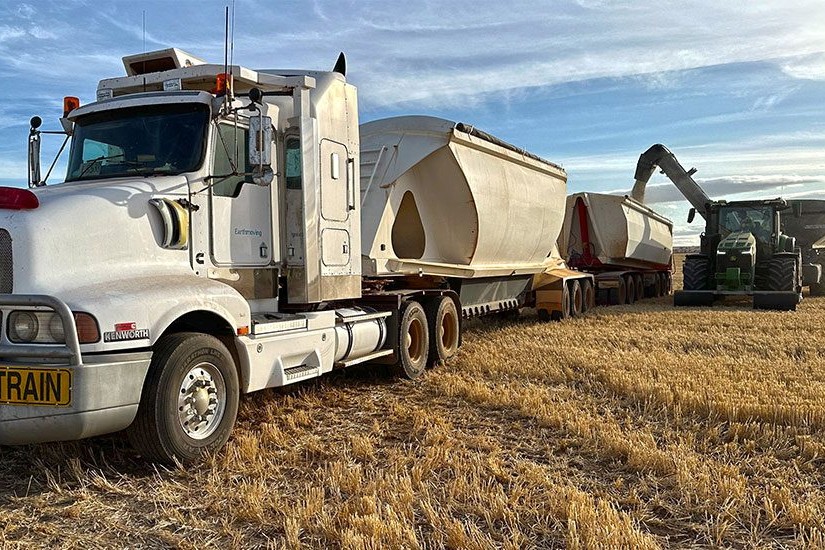
How much worth is in a Kenworth? We took a ride in a 15-year-old T950 on a
This morning Craig was delivering this new WA500 loader to Grange Resources‘ Port Latta iron ore pellet plant and port facility approximately 70kms west of Burnie, where they produce in excess of two million tonnes of premium iron ore pellets annually. Grange Resources also owns and operates the Savage River magnetite iron ore mine 100km
The operation is unique in that concentrated iron ore slurry is pumped 83km from the mine at Savage river to the pellet plant at Port Latta via a 229mm internal diameter pipeline, taking approximately 14 hours. In mining
At the Port Latta
The new Komatsu WA500 is one of three that feeds slurry into the processing plant and is replacing one that Craig will reload onto his Drake low loader and return to the Komatsu dealership.
Craig‘s Kenworth is an old school T950, with a Gen-II Cummins that he reckons has been one of the most reliable engines he‘s ever had. “Apart from regular maintenance, we‘ve hardly touched it. It‘s really been a great engine,” Craig said. “It‘s got plenty of power for this type of work; today with the WA500 that weighs around 30
When asked about
Up front of the Kenworth T950 is a highly polished King Bars‘ Warrego 4-post FUPD complete with ‘Oversize‘ signs and covers, as well as a row of traditional and LED driving lights.
Craig says the life cycle of the Kenworth product is something that few if any other manufacturers can get close to. “I can park this next to a new T909 and
The Cummins under the hood punches out a healthy 600 horsepower and runs that through an Eaton 18-speed transmission and out to Meritor RT50-160GP axles all mounted on a Kenworth 6-rod rear end.

Photo: The immaculate interior gives a good indication of the care and upkeep of the rest of the truck.
When the Gen-II Signature engine was released it was said that the dual overhead cam design allowed Cummins engineers to optimise both engine and braking performance. It was suggested that one should look at the engine front on, from the timing cover, and note that the left-hand camshaft drives the high-pressure fuel injection system which is massively robust to handle pressures up to 2,380 bar (35,000 psi) for future emissions regulations. The right-hand camshaft operates the valves and drives the fuel pump that supplies the fuel rail. It also incorporates a set of lobes dedicated to operating the Intebrake, the fully integrated engine brake system.
This enables the engine to deliver more braking power than horsepower, without additional stress. According to the spec
Craig agrees, citing the Cummins‘ engine braking as the best he has ever experienced. “Operating in the hilly conditions around Tasmania and with the
For
The T950 with its set forward front axle was introduced in 1992 and originally
As well as looking the part, the T950 was designed to operate in almost any application from heavy haulage to livestock to logging, whether pulling a single trailer or a triple road train.

Photo: Craig Wivell in front of his 15-year-old Kenworth T950. Craig believes there‘s no reason it won‘t do another decade and a half with well planned routine maintenance.
The truck‘s high mounted cab set back from its engine meant there was no engine intrusion into the cabin, allowing for easy
During its 15-year production run the T950 built up a considerable fan base and is remembered fondly with other legendary Kenworth classics like the W Model and SAR. In
One question that is often asked: “if it was such a popular model, why was phased out in 2007?”
The arrival in 2008 of Cummins ISX and Signature engines with exhaust gas recirculation (EGR) systems to meet the ADR 80/02 emission standards demanded increased cooling capacity.
Increasing the size of the radiator on the T950 in a vertical direction basically turned it into a T904 that consequently evolved into a T908 for the 2008 model year. So the decision to phase out the T950 model was imminent.
Read more
Mack Muster a must
0 Comments6 Minutes
Decks to Darwin
0 Comments1 Minutes





